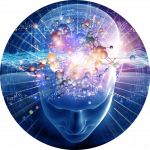Researchers have proved that reminiscing and nostalgia can act as a mild painkiller, reducing pain by 10%, because it takes your mind off the stresses and strains of life. Nostalgia (a longing for the past that can be triggered by music, pictures and smell) has long been associated with reductions in stress and sadness.
Researchers in the UK used functional MRI scans that measure brain activity by detecting changes in brain blood flow to monitor brain activity in 34 volunteers [aged 18 to 25] while they were hooked up to a machine that exposed their wrists to increasing levels of heat discomfort for short bursts of three seconds.
Half of the participants were shown 26 nostalgic pictures displayed on a projector, such as popular childhood sweets, cartoons and playground games. The remaining volunteers looked at images of scenes or objects from modern life. Those who viewed nostalgic pictures showed reduced activity in the left lingual gyrus and parahippocampal gyrus – two parts of the brain involved in pain perception. There was also increased activity in the thalamus – the part of the brain that processes pain – when participants looked at nostalgic pictures.
The participants were then asked to rate how painful the heat was on a scale of 0 – 10 and how nostalgic the pictures made them feel on a scale of 1-5. Participants who looked at the memory-inducing images reported feeling around 10% less pain than those exposed to the same levels of discomfort who looked at pictures from modern life. This points to a ‘functional link’ between nostalgic impacts and the pain-processing part of the brain. The more nostalgic the participants perceived images to be, the less pain they reported.
We already know that positive thoughts and emotions can help maintain a good mental status and counteract negative experiences. So indulging oneself in nostalgia may be a drug-free way to alleviate low levels of pain such as headaches or mild clinical pain. Add hypnosis into the equation, and the process is even more effective. In deep relaxation, patients can achieve a level of ‘involvement’ in pleasant memories and thus facilitate
further relief from pain such as headaches or mild clinical pain.
The results were published in the Journal of Neuroscience
At the University of Saskatchewan, Canada, researchers set up a trial of almost 200
patients admitted to the Royal University Hospital A&E department. Depending on their mobility and condition, patients were allowed to pet the dog or have it lie next to them.
Patients who took part in the study saw their pain levels decline by up to 43% and feelings of anxiety reduce by up to 48% after interacting with a specially-trained therapy dog. It is thought that the dog provided a sense of comfort and companionship. Previous research had shown even small interactions with dogs caused the brain to produce oxytocin, a hormone often referred to as the ‘cuddle chemical’ and suppress the stress hormone cortisol.
The therapeutic effects of specially trained animals in health settings have already been established, but those studies did not use control groups to confirm the results, whereas the Saskatchewan researchers did, and found no similar reductions in control group patients.
Half the patients were asked to rate their levels of pain, depression, and anxiety out of 10 before the 10 minute encounter with the therapy dog – and then again 15 minutes after. The other half of the patients did not have any contact with the dog.
Health and wellness expert Dr Colleen Dell, the lead author of the study, said the findings demonstrated the potential value of therapy dogs for emergency department patients. She said ‘Clinically significant changes in pain as well as significant changes in anxiety, depression and well-being were observed in the therapy dog intervention compared to control.’
Therapy dogs are occasionally used in the NHS to help patients whose condition means they need to stay in hospital for a long time, such as in paediatrics or in palliative care settings. Animal assisted interventions are also used as part of actual treatment for mental health problems such as depression. NHS trusts usually rely on local arrangements with charities or trained volunteers to get animals onto wards.
Another factor which could have impacted the results was the role of the therapy dog handler who, as part of the process, talks to the patients about their experience with dogs and how comfortable they were with animals. Further research could examine the impact of this interaction on patients’ experience.
The results were published in the scientific journal Plos One.
The UK National Health Service (NHS) says chronic pains can be eased through drug-free methods:
1. Exercise: walking, swimming, gardening and dancing can ease some pain by blocking pain signals to the brain. These activities can also stretch stiff and tense muscles, ligaments and joints.
2. Breathing exercises: concentrating on taking slow and deep breaths can help you feel more in control and relaxed, preventing muscle tension and anxiety, which can make pain worse.
3. Distracting yourself: shifting attention to something else can help ease pain by refocusing your attention.

